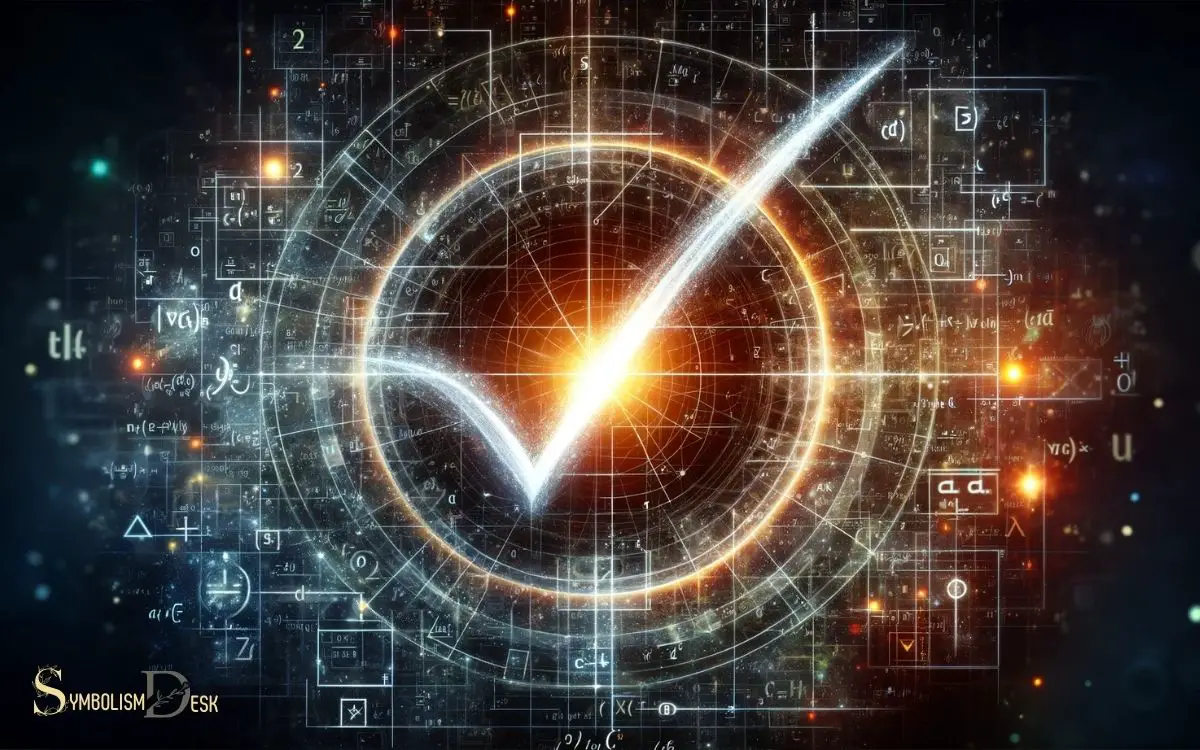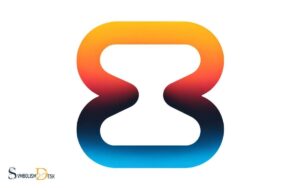Discrete Math and or Symbols: Explain!
Discrete mathematics often utilizes symbols to express logical relationships, one of the most common being the “or” symbol (∨). In formal logic, “A ∨ B” means “A or B,” which is true if at least one of the propositions A or B is true.
The “or” in discrete math is an inclusive or, meaning that it allows for one or both of the propositions to be true:
This type of “or” is in contrast to the exclusive “or,” also known as XOR, where the statement is true only if one proposition is true, but not both.
The use of the “or” symbol (∨) in discrete math simplifies the representation and understanding of logical relationships in various fields, from computer science to philosophy. For example, in computer science, the use of the “or” symbol allows for the creation of complex logical conditions that can be used to make decisions in programming. Similarly, in philosophy, the “or” symbol can be used to express different options and possibilities in logical arguments. Understanding logic symbols explained is crucial for clear and precise communication in any field that deals with logical relationships and reasoning.

Key Takeaway
Importance of Discrete Math
The importance of discrete math in various fields cannot be overstated. This branch of mathematics plays a crucial role in computer science, engineering, cryptography, and data analysis.
By providing the fundamental building blocks for algorithms and problem-solving, discrete math enables the efficient functioning of digital technologies and systems.
Its concepts, such as set theory, graph theory, and combinatorics, are essential for modeling and solving real-world problems in diverse areas.
For instance, in computer science, discrete math is integral to designing efficient algorithms, network optimization, and cryptography techniques. Moreover, in engineering, it underpins the development of reliable systems and control theory.
In essence, discrete math serves as the backbone for addressing complex, real-world challenges across various disciplines, making it an indispensable field of study.
Basic Concepts and Notations
Discrete math employs a variety of basic concepts and notations to represent mathematical structures and relationships. These concepts and notations serve as the building blocks for understanding and solving problems in discrete mathematics.
- Sets: Fundamental concept representing a collection of distinct objects.
- Relations: Describes the connections between elements of sets.
- Functions: Defines a relationship between a set of inputs and a set of possible outputs.
- Logic: Utilized to reason about propositions and make deductions using logical rules.
Understanding these basic concepts and notations is crucial for tackling more complex problems in discrete math, making them essential for anyone delving into this field of mathematics.
Logical and Set Theory Symbols
When delving into the realm of discrete mathematics, an understanding of logical and set theory symbols is paramount for effectively representing and analyzing mathematical structures and relationships.
The following table provides a concise reference for some common logical and set theory symbols:
| Symbol | Name | Meaning |
|---|---|---|
| ∪ | Union | Set containing all elements of both sets |
| ∩ | Intersection | Set containing all elements in both sets |
| ∈ | Element of | Belongs to the set |
These symbols are fundamental for expressing relationships between sets and making logical assertions. Mastering these symbols is crucial for comprehending and solving complex problems in discrete mathematics and computer science.
Combinatorics and Probability Symbols
The notation for combinations and probability event symbols are essential components of combinatorics and probability theory. Understanding these symbols is crucial for effectively analyzing and solving problems in these areas of mathematics.
By familiarizing ourselves with these symbols, we can enhance our ability to calculate probabilities and make informed decisions in various real-world scenarios.
Notation for Combinations
Frequently used in combinatorics and probability, the notation for combinations represents the number of ways to choose a subset of items from a larger set, without regard to the order of selection.
- The notation for combinations is denoted as “n choose k,” represented as ${n \choose k}$.
- Here, n is the total number of items in the set, and k is the number of items to be chosen.
- The formula for combinations is ${n \choose k} =rac{n!}{k!(n-k)!}$, where “!” denotes factorial, representing the product of all positive integers up to that number.
- Combinations are used in various real-world scenarios, such as forming committees, selecting a team from a pool of players, or choosing a group of items from a larger collection without considering their order.
Probability Event Symbols
In combinatorics and probability, the notation for combinations’ probability event symbols are utilized to represent various outcomes within a given set, providing a framework for analyzing and quantifying the likelihood of specific events occurring.
| Symbol | Definition |
|---|---|
| P(E) | Probability of event E occurring |
| P(E’) or P(~E) | Probability of event E not occurring |
| P(E and F) | Probability of both events E and F occurring |
These symbols are essential in calculating probabilities, making predictions, and understanding the likelihood of events in various scenarios.
Understanding these symbols forms the foundation for more advanced probability concepts and applications in real-world problem-solving.
Graph Theory and Network Symbols
Graph theory and network symbols play a crucial role in analyzing and representing interconnected structures in discrete mathematics.
- Graph Representation: Graphs are represented using nodes and edges, where nodes depict the entities, and edges illustrate the connections between them.
- Connectivity: Network symbols help in understanding the connectivity between different nodes within a graph, aiding in the analysis of relationships and patterns.
- Path Finding: Symbols and notations are used to identify and analyze paths between nodes, essential for various applications such as navigation systems and logistics.
- Complex Network Analysis: Symbols facilitate the study of complex networks, including social networks, transportation networks, and biological networks, allowing for the extraction of valuable insights.
Understanding these concepts is essential for comprehending the interconnected world around us.
Cryptography and Number Theory Symbols
Cryptography and number theory symbols are fundamental components of discrete mathematics, playing a pivotal role in secure communication and data protection.
In cryptography, symbols such as encryption keys, modular arithmetic notations, and mathematical functions are used to secure sensitive information.
Number theory symbols, on the other hand, are essential for understanding the properties of integers, prime numbers, and modular arithmetic, which form the basis of many cryptographic algorithms.
Symbols such as modulo operation (%), Euler’s totient function (φ), and congruence (≡) are extensively used in number theory to study the relationships between numbers and their properties.
Mastery of these symbols is crucial for professionals in the fields of cybersecurity, data encryption, and information technology to ensure the confidentiality and integrity of digital communication.
Applications in Computer Science
The application of discrete math in computer science is extensive and impactful. Coding algorithms heavily rely on mathematical concepts to efficiently process and manipulate data.
Furthermore, logic gates, fundamental components of digital circuits, are based on mathematical principles, making discrete math essential in the design and analysis of computing systems.
Lastly, discrete math plays a pivotal role in cryptography, providing the theoretical foundation for secure communication and data protection in computer networks.
Coding Algorithms With Math
Coding algorithms in computer science utilize mathematical concepts to create efficient and effective solutions for data manipulation and problem-solving.
This integration of math and coding allows for the development of algorithms that can process large amounts of data, optimize performance, and solve complex problems in various fields.
Some key ways in which math is applied in coding algorithms include:
- Algorithm Analysis: Using mathematical techniques to analyze the efficiency and performance of algorithms.
- Cryptography: Applying number theory and abstract algebra to develop secure communication protocols.
- Machine Learning: Utilizing linear algebra and calculus for developing and optimizing machine learning algorithms.
- Graph Theory: Employing graph algorithms and network flow algorithms for solving real-world problems in transportation, communication, and social networks.
These applications showcase the crucial role of mathematical concepts in developing coding algorithms for diverse computational tasks.
Logic Gates and Math
In computer science, logic gates serve as fundamental components for processing and manipulating binary data through the application of mathematical principles.
These gates, including AND, OR, NOT, and XOR, are the building blocks of digital circuits and form the basis of Boolean algebra.
By using mathematical operations such as addition and multiplication, logic gates can perform complex tasks, enabling the functioning of modern computers and digital systems.
The application of mathematical concepts like truth tables and Boolean logic helps in analyzing and designing these circuits.
Understanding the mathematical foundations of logic gates is crucial for computer scientists and engineers to develop efficient and reliable systems.
Cryptography and Math
An understanding of cryptography and its applications in computer science is essential for anyone working in the field of information security. Cryptography utilizes mathematical concepts to secure communication and data, making it a crucial aspect of modern computer science.
Key applications of cryptography in computer science include:
- Secure Communication: Encryption algorithms are used to secure data transmission over networks.
- Data Integrity: Cryptographic hash functions ensure the integrity of data by detecting any changes to it.
- Authentication: Cryptography enables the verification of the identity of communicating parties.
- Access Control: Cryptographic techniques are employed to control access to sensitive information and resources.
These applications highlight the vital role that mathematical principles play in ensuring the security of digital systems and information.
Conclusion
Discrete math plays a crucial role in various fields, including computer science, cryptography, and network theory.
Understanding the basic concepts and notations, as well as the logical and set theory symbols, is essential for solving complex problems.
It is interesting to note that according to the Bureau of Labor Statistics, the employment of mathematicians and statisticians is projected to grow 33% from 2020 to 2030, much faster than the average for all occupations.






